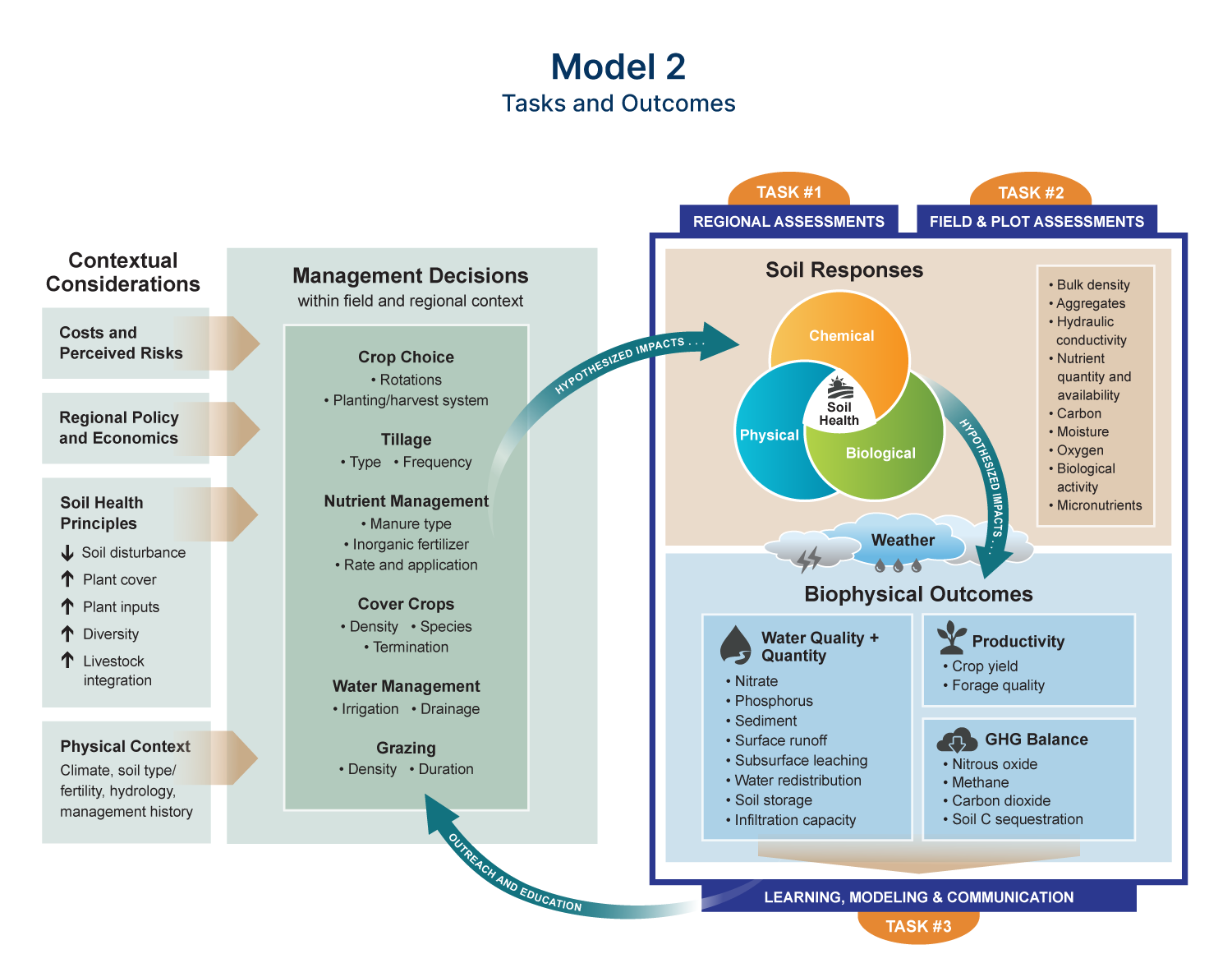Conceptual Models
Conceptual models are tools used to simplify a complex system by visualizing key components and their interconnections. These models can range from diagrams depicting physical processes at a field site, such as the flow of water through the subsurface, to workflow diagrams that illustrate relationships among different activities and measurements within a project. Conceptual models are useful for visualizing hypotheses and developing shared understanding of a system.
Two conceptual models were developed in DSWR to help illustrate how the various measurements and activities in the project are supporting overall project aims. These models are “living documents” that will continue to evolve as researchers collect more data.

